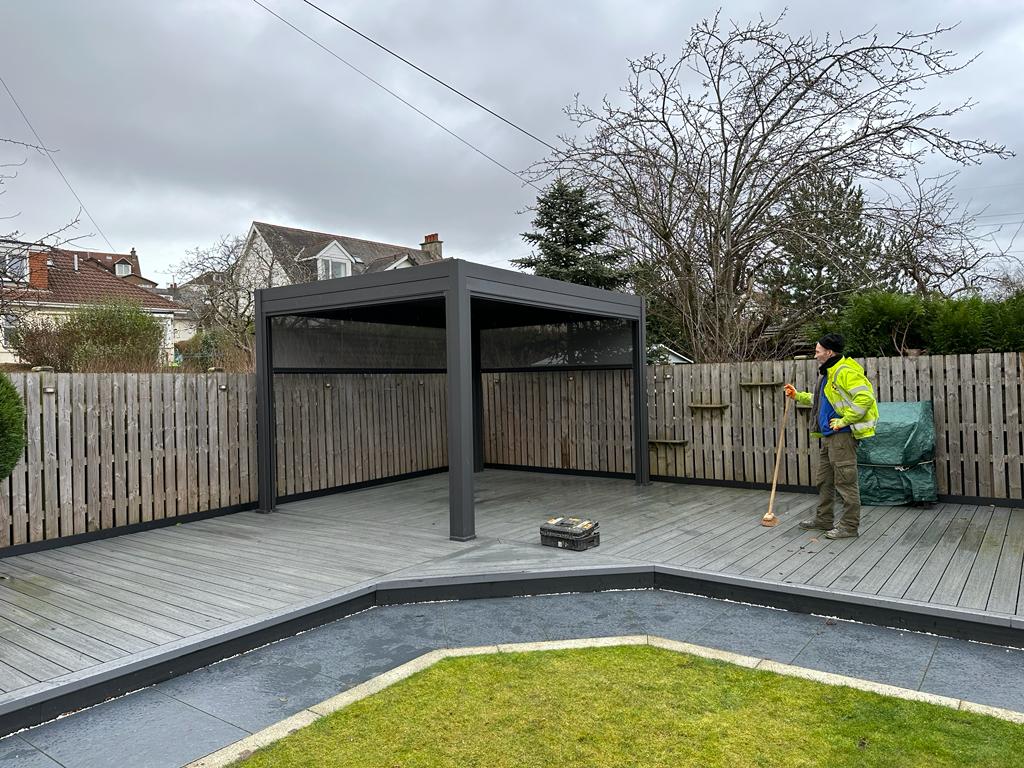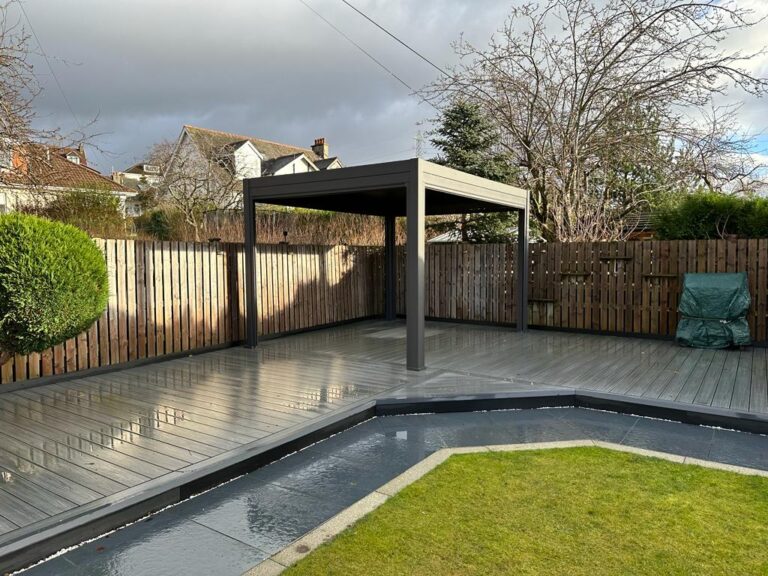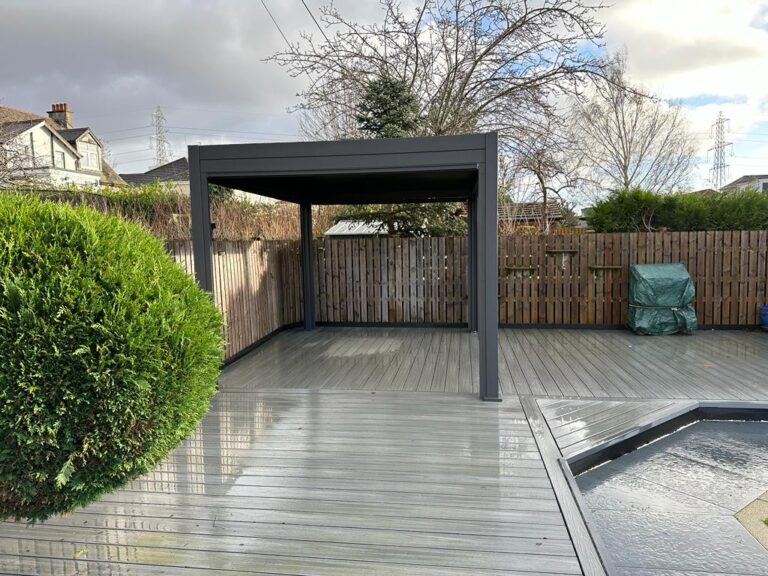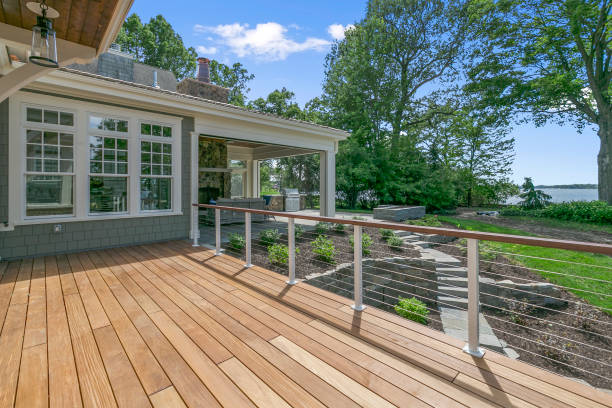Composite decking has become a popular choice for outdoor spaces due to its durability and low maintenance. If you’re considering laying composite decking on soil, there are important steps and considerations to keep in mind.
In this article, we’ll explore the process of laying composite decking on soil, including the advantages and disadvantages of this material. We’ll discuss alternatives to laying composite decking on soil and how to maintain and clean composite decking for long-lasting enjoyment.
Whether you’re a DIY enthusiast or a homeowner looking to enhance your outdoor living space, this comprehensive guide will provide you with the essential information needed to make informed decisions about composite decking.
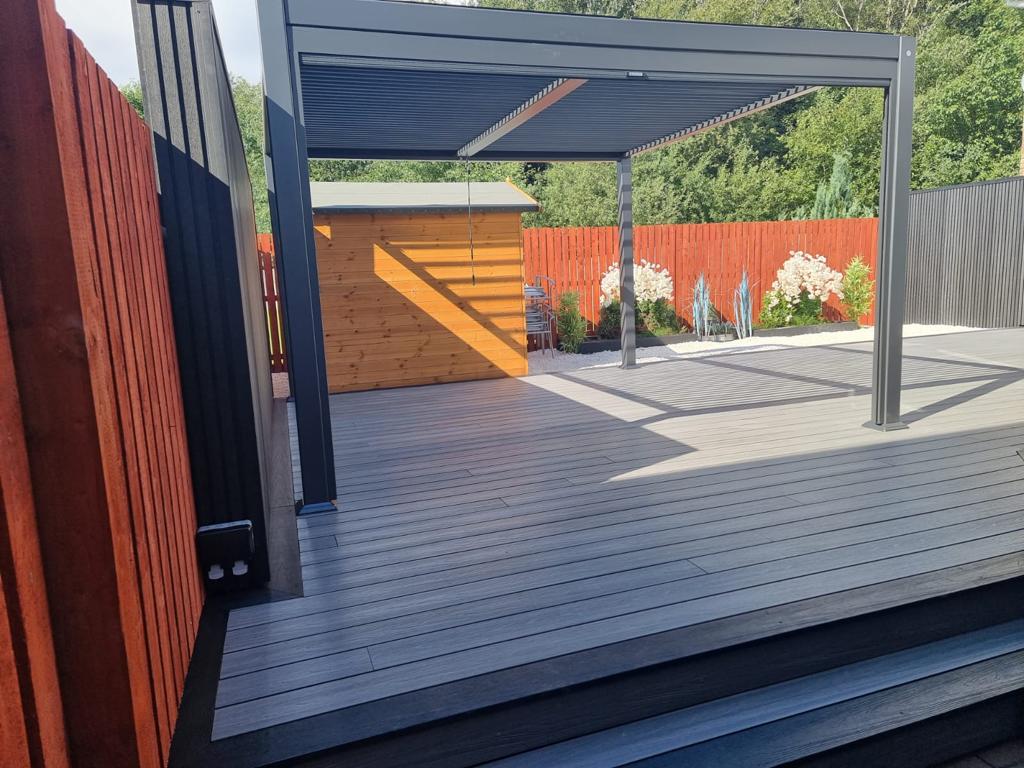
What is Composite Decking?
Composite decking is a modern outdoor deck option that offers a durable and low-maintenance alternative to traditional wooden decks.
It is made from a combination of wood fibres and recycled plastic, providing a strong and weather-resistant material that is less susceptible to rot, warping, and insect damage compared to natural wood. Composite decking requires minimal upkeep, eliminating the need for staining, sealing or painting, making it an ideal choice for outdoor spaces. Its ability to withstand harsh weather conditions and high foot traffic makes it a long-lasting solution for residential and commercial decking needs.
Can you lay composite decking on soil?
Laying composite decking on soil is possible with proper installation and preparation techniques to address moisture and drainage concerns.
One critical consideration for installing composite decking on soil is ensuring effective moisture management. To achieve this, it is essential to create a suitable foundation that promotes drainage, such as incorporating a sloped understructure or using gravel underneath the decking. In addition, utilising support structures like joists that are resistant to moisture and decay is crucial for long-term stability. Proper ground preparation, including removing vegetation and ensuring a level surface, is also vital to laying composite decking on soil. By addressing these key installation considerations, you can ensure a durable and visually appealing outdoor deck.
What are the steps to lay composite decking on soil?
When laying composite decking on soil, it is essential to start by preparing the ground, addressing moisture and drainage concerns, creating a sturdy support structure with pressure-treated wooden joists, and following proper maintenance and spacing guidelines for optimal installation.
Begin the process by clearing the area of any vegetation and debris, ensuring a level surface for the decking. Next, consider installing a geotextile fabric to prevent weed growth and promote drainage.
The support structure should be created using treated wooden joists placed at regular intervals, taking into account the manufacturer’s recommendations for spacing. Once the groundwork is set, carefully lay the composite decking boards, securing them according to the manufacturer’s instructions. Regular maintenance, such as cleaning and sealing, will ensure the longevity of the decking, providing a beautiful and durable outdoor space.
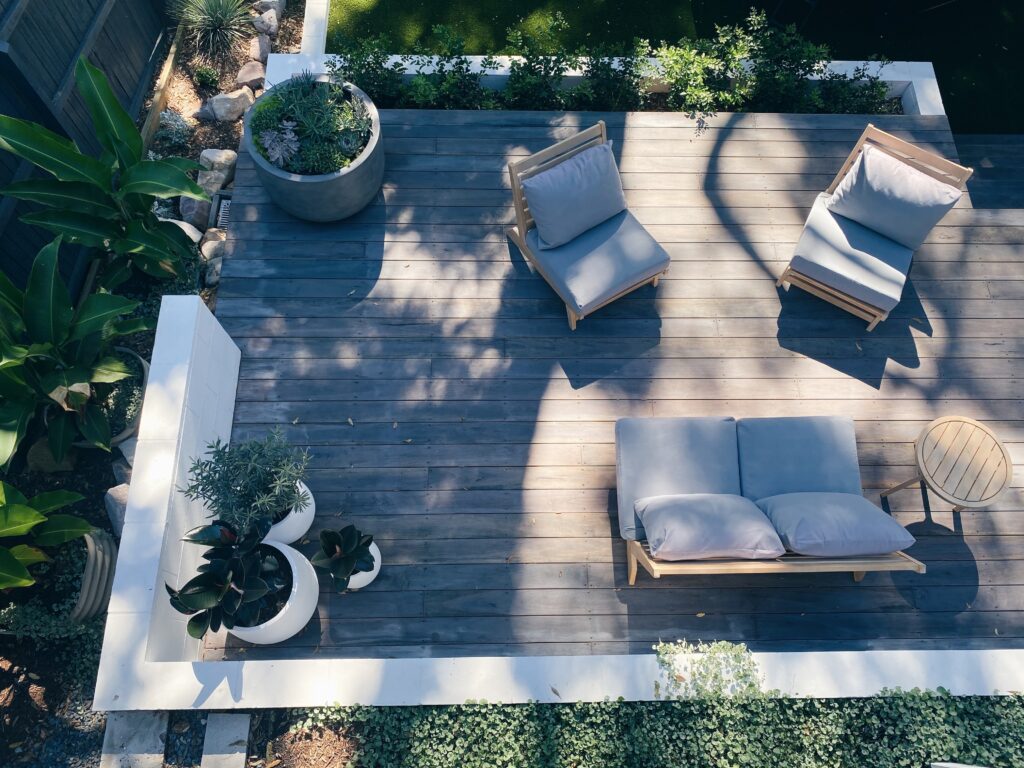
What Are The Advantages of Using Composite Decking?
Using composite decking offers numerous advantages for outdoor ground applications, including low maintenance, exceptional durability, and eco-friendly features.
Its low maintenance requirements involve regular cleaning with just soap and water, removing the need for staining, sealing, or painting. The durability of composite decking is attributed to its resistance to rot, decay, and insect damage, making it ideal for outdoor use in various climates. Its eco-friendly features stem from being made of recycled materials and contributing to sustainable building practices.
Low Maintenance
One of the key advantages of composite decking is its low maintenance requirements, making it an ideal choice for outdoor ground applications that demand durability and longevity.
Composite decking is highly resistant to environmental factors such as mould, mildew, moisture, and UV rays, ensuring its longevity even in harsh outdoor conditions. This means that it requires minimal upkeep compared to traditional wood decking, saving homeowners time and effort in maintenance.
With composite decking, there is no need for sanding, staining, or sealing, further reducing the maintenance efforts and costs associated with outdoor ground applications. It offers a convenient, long-lasting solution, making it a popular choice for outdoor living spaces.
Long-lasting
Composite decking stands out for its exceptional durability, providing a long-lasting ground solution for outdoor areas, ensuring longevity and structural integrity. Its resilience against wear, weather, and outdoor conditions make it a popular choice for decking material. Unlike traditional wood decking, composite decking is highly resistant to fading, scratching, and staining, which significantly contributes to its long-term durability. This resilience allows it to maintain its visual appeal and structural strength even after years of exposure to harsh elements. The minimal maintenance required for composite decking further contributes to its lasting performance, making it a reliable and practical choice for outdoor spaces.
Environmentally Friendly
Composite decking is recognised for its environmentally friendly attributes, offering a sustainable ground solution for outdoor areas with minimal impact on the environment.
It is made from a blend of recycled wood fibres and plastic, reducing the need for harvesting new timber and diverting waste from landfills. Composite decking materials do not require toxic chemical treatments, further minimising their environmental footprint. The longevity of composite decking means less frequent replacement, contributing to reduced resource consumption.
With its low maintenance requirements and long lifespan, composite decking proves to be an eco-conscious choice for outdoor living spaces.
What are the disadvantages of using composite decking?
Whilst composite decking offers various advantages, it also presents certain drawbacks such as:
- The higher initial cost compared to wood.
- Potential slipperiness when wet.
- The tendency to fade over time in outdoor settings.
This higher initial cost can be a deterrent for homeowners on a budget, as composite decking materials are generally more expensive to install upfront than traditional wood decking. The slipperiness of composite decking when wet raises safety concerns, particularly in areas prone to rain or near swimming pools. The fading of composite decking over time, especially when exposed to harsh sunlight and varying temperatures, may result in a less vibrant appearance, potentially requiring maintenance and refinishing to restore its original look.
More Expensive Than Wood
One notable disadvantage of composite decking is its higher initial cost compared to traditional wood, making it a less budget-friendly option for outdoor projects.
Whilst the initial investment for composite decking may be higher, it is essential to consider the long-term benefits, such as lower maintenance and durability. The cost of traditional wood often includes ongoing expenses for staining, sealing and repairs, which can add up over time. The lifespan of composite decking is usually longer, reducing the need for frequent replacements. Therefore, despite the higher upfront cost, composite decking can offer cost savings and a better return on investment in the long run.
Can Be Slippery When Wet
Composite decking can pose a slipperiness risk when wet, requiring additional precautions for safety in outdoor settings, especially in areas prone to moisture and rainfall.
This potential hazard emphasises the need for integrating slip-resistant measures to ensure a secure surface during wet conditions. Implementing specialised anti-slip strips or coatings can effectively enhance the traction of composite decking, providing a safer environment for outdoor activities.
Regular maintenance plays a crucial role in preserving the anti-slip properties, such as cleaning and applying non-slip products. These proactive steps are essential for preventing accidents and ensuring the overall safety of outdoor spaces adorned with composite decking.
Can Fade Over Time
Over time, composite decking may experience fading in outdoor settings due to prolonged exposure to sunlight and environmental elements, requiring maintenance and care to retain its aesthetic appeal.
This fading can result from the natural breakdown of the materials under constant sun exposure, leading to a loss of colour vibrancy and a weathered appearance. Regular cleaning and application of UV-protective coatings can help prevent or minimise fading, preserving the decking’s original allure.
Addressing any mould, mildew, or staining promptly can contribute to maintaining the decking’s longevity and performance. By implementing these maintenance practices, homeowners can enjoy durable and visually pleasing outdoor spaces for years to come.
What Are The Alternatives To Laying Composite Decking on Soil?
When laying composite decking on soil is not feasible, alternatives include:
- Building a deck foundation
- Using deck blocks or piers for elevated installations
- Creating a base with gravel or sand to provide a stable ground for the deck
These alternative methods offer flexibility in adapting to different terrain conditions, allowing homeowners to enjoy the benefits of composite decking even in challenging environments.
Deck foundations provide a solid structure by anchoring into the ground, while deck blocks and piers offer elevated platforms for the deck, avoiding direct contact with the soil.
Alternatively, using gravel or sand as a base creates a level surface that helps distribute weight evenly, promoting the longevity and durability of the composite decking.
Constructing a Deck Base
A feasible alternative to laying composite decking on soil is to construct a deck foundation using appropriate materials and construction techniques to provide stable support for the deck structure in outdoor settings.
This foundational approach ensures structural integrity, durability, and longevity for your deck, particularly in areas with varying weather conditions.
The first step is to determine the size and layout of the deck, then excavate and level the area before placing concrete footings or robust support posts. Following this, installing beams and joists provides the framework for the deck, and ensuring proper anchoring and alignment is crucial. Adding the decking material of your choice completes the installation, resulting in a secure and enduring outdoor space for relaxation and entertainment.
Using Deck Blocks or Piers
Utilising deck blocks or piers offers an elevated installation solution for composite decking, providing stable support and structural elevation in outdoor environments where direct ground installation is not feasible.
They are particularly useful in areas with uneven terrain or poor drainage, as they allow the decking to be raised off the ground, reducing the risk of moisture damage and promoting air circulation. Deck blocks or piers are also advantageous for creating a level surface for the decking, ensuring a professional and aesthetically pleasing outcome. Their adjustable nature makes them versatile for various layouts and configurations, catering to different design preferences and requirements.
Creating a Gravel or Sand Base
Creating a base with gravel or sand offers a stable foundation for composite decking in outdoor settings, providing a viable alternative when direct ground installation is not practical or advisable.
This method is particularly beneficial in areas with uneven or poor soil conditions, as the gravel or sand base helps distribute the weight evenly, preventing any potential sagging or shifting of the composite decking. The use of gravel or sand allows for efficient drainage, reducing the risk of water damage and promoting longer durability.
The process involves carefully levelling and compacting the gravel or sand to ensure a solid and flat surface that can support the decking materials, creating an ideal platform for outdoor leisure and entertainment spaces.
How To Maintain and Clean Composite Decking?
Proper maintenance and cleaning of composite decking in outdoor ground applications involve regular inspections, gentle cleaning methods, and proactive measures to manage moisture and preserve its condition and appearance.
It is essential to conduct thorough inspections of the decking surface to identify any signs of mould, mildew, or discolouration. When cleaning, opt for non-abrasive techniques such as using a mild soap and water solution or a composite deck cleaner to avoid damaging the material. To effectively manage moisture, ensure proper drainage and ventilation in the deck structure to prevent water accumulation and potential damage. By following these maintenance practices, you can extend the longevity and aesthetic appeal of your composite decking.

